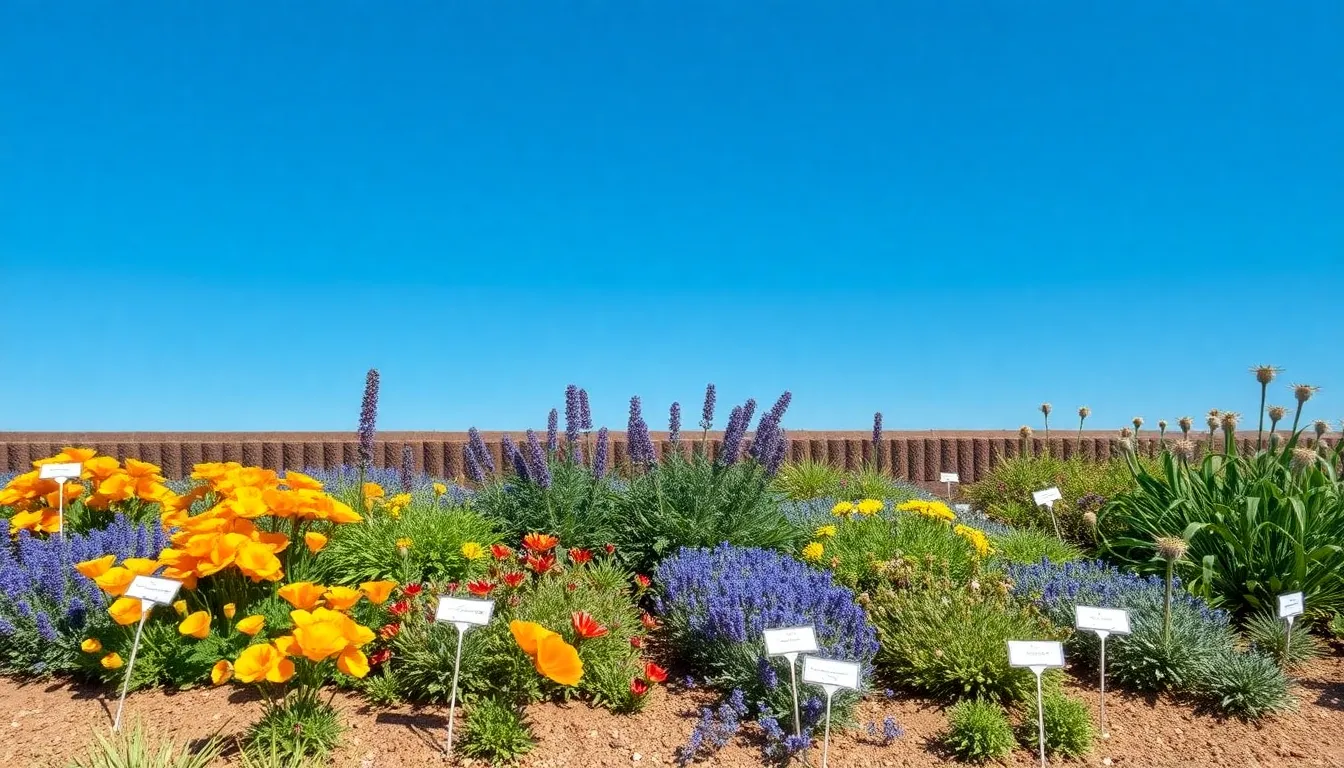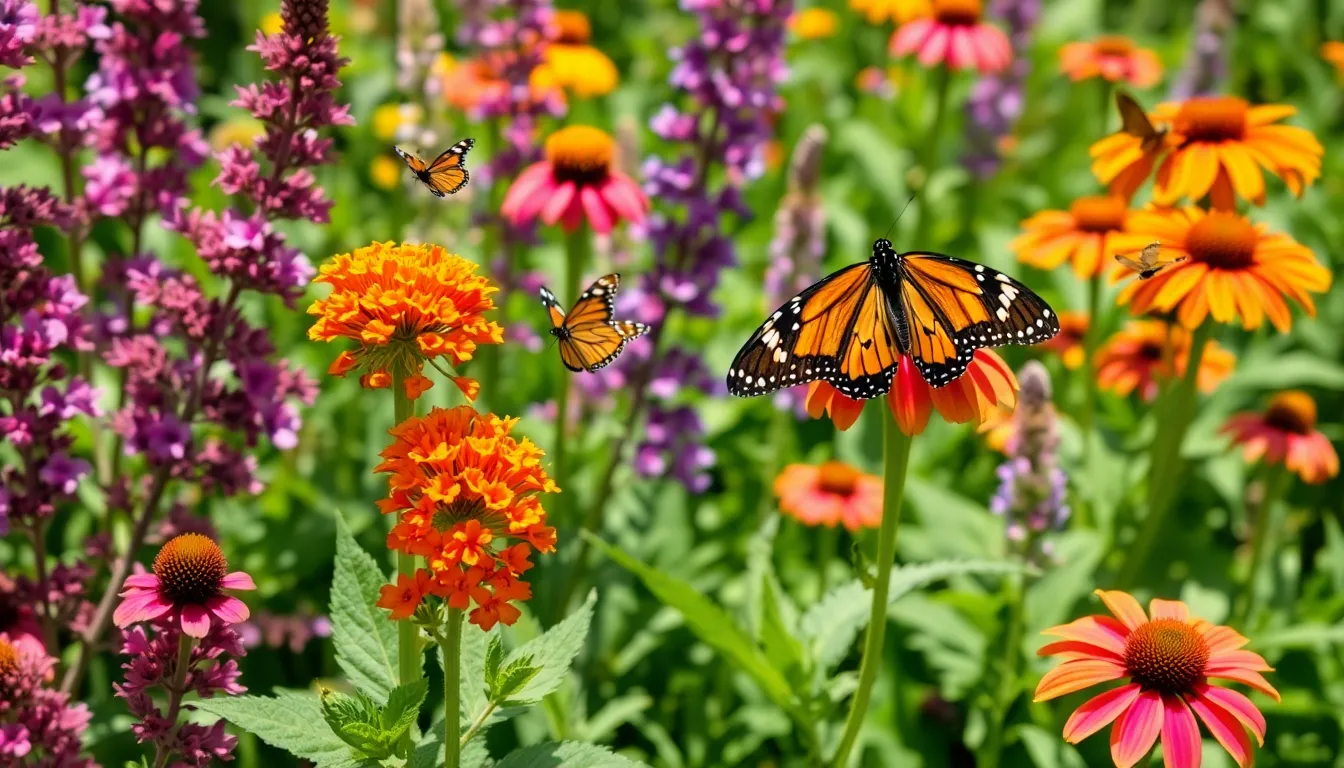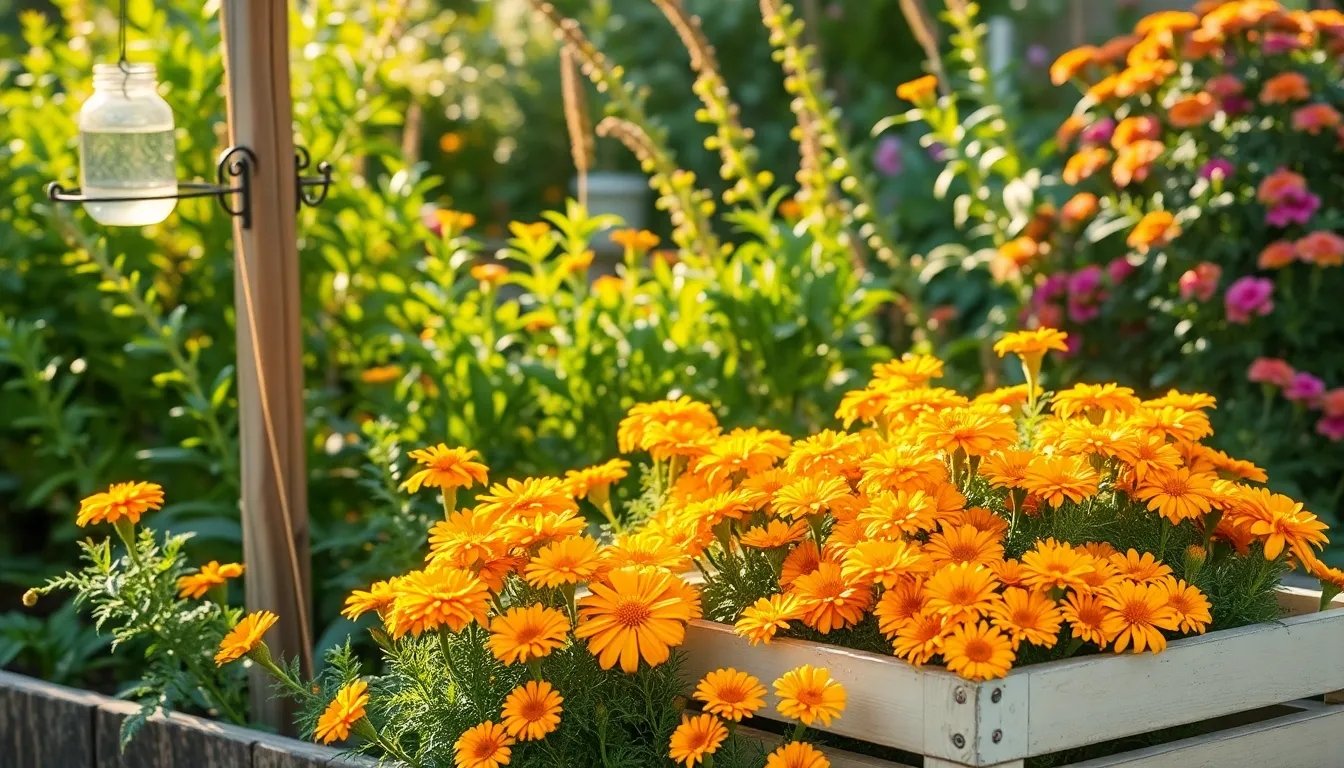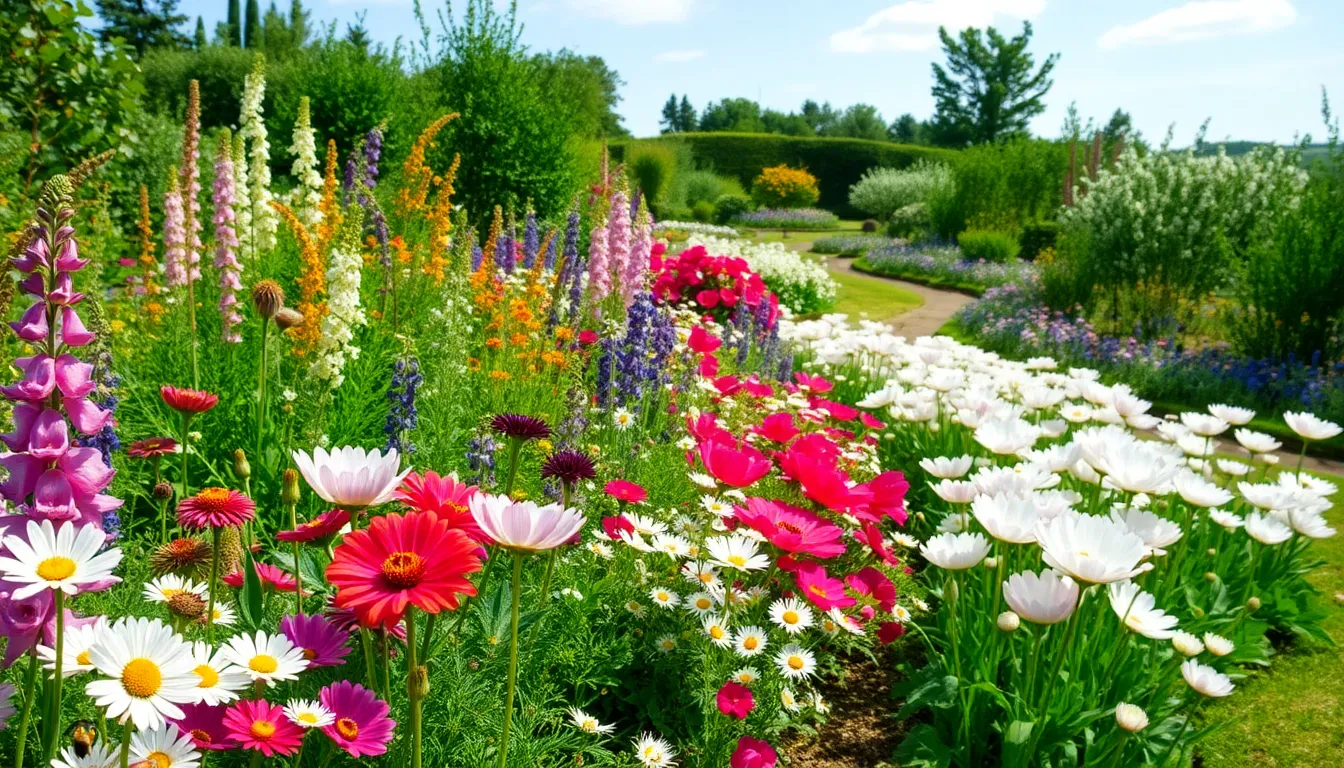In an era where water conservation is more crucial than ever, crafting a stunning flower bed that thrives with minimal watering is both a practical and rewarding endeavor. Whether you’re just getting your hands dirty for the first time or you’ve been nurturing your garden for years, designing a low-water flower bed can transform your outdoor space into a vibrant oasis while aligning with eco-friendly practices.
You might be wondering how to create a lush, colorful garden that doesn’t demand constant watering. This article will guide you through ten innovative low-water flower bed designs that promise to captivate your senses and simplify your gardening routine. We’ll explore plant selections, layout ideas, and clever techniques that make these gardens both beautiful and sustainable. So, prepare to get inspired, as we delve into the art of designing flower beds that prioritize beauty and conservation, proving that less water doesn’t mean less impact.
Choosing Drought-Tolerant Plants
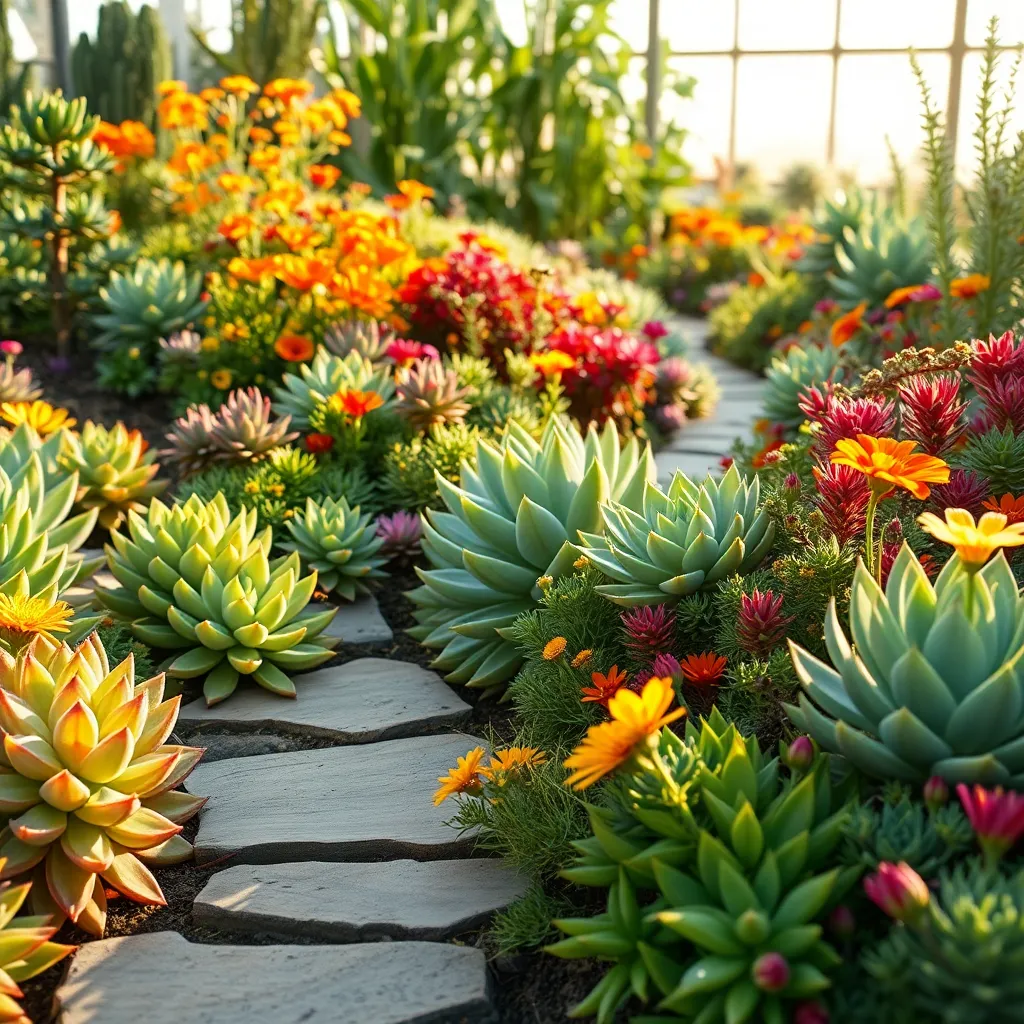
When selecting drought-tolerant plants, it’s crucial to consider species that naturally thrive in low-water environments. Many of these plants have developed adaptations like deep root systems or waxy leaves, which help them survive with minimal moisture.
Succulents and cacti are excellent choices for a low-water flower bed, as they store water in their fleshy leaves and stems. To provide the best growing conditions, plant them in well-draining soil, such as a sandy or gritty mix, to prevent root rot.
Another excellent option for drought-tolerant gardening is lavender, which not only requires little water but also adds a delightful fragrance to your garden. For optimal growth, ensure lavender is planted in a sunny spot with well-drained soil, and avoid overwatering by letting the soil dry out between waterings.
For those looking to add color and texture, consider ornamental grasses like blue fescue or feather reed grass. These hardy plants are not only low-maintenance but also provide year-round interest, thriving in a variety of soil types as long as they have adequate drainage.
Designing with Succulents and Cacti
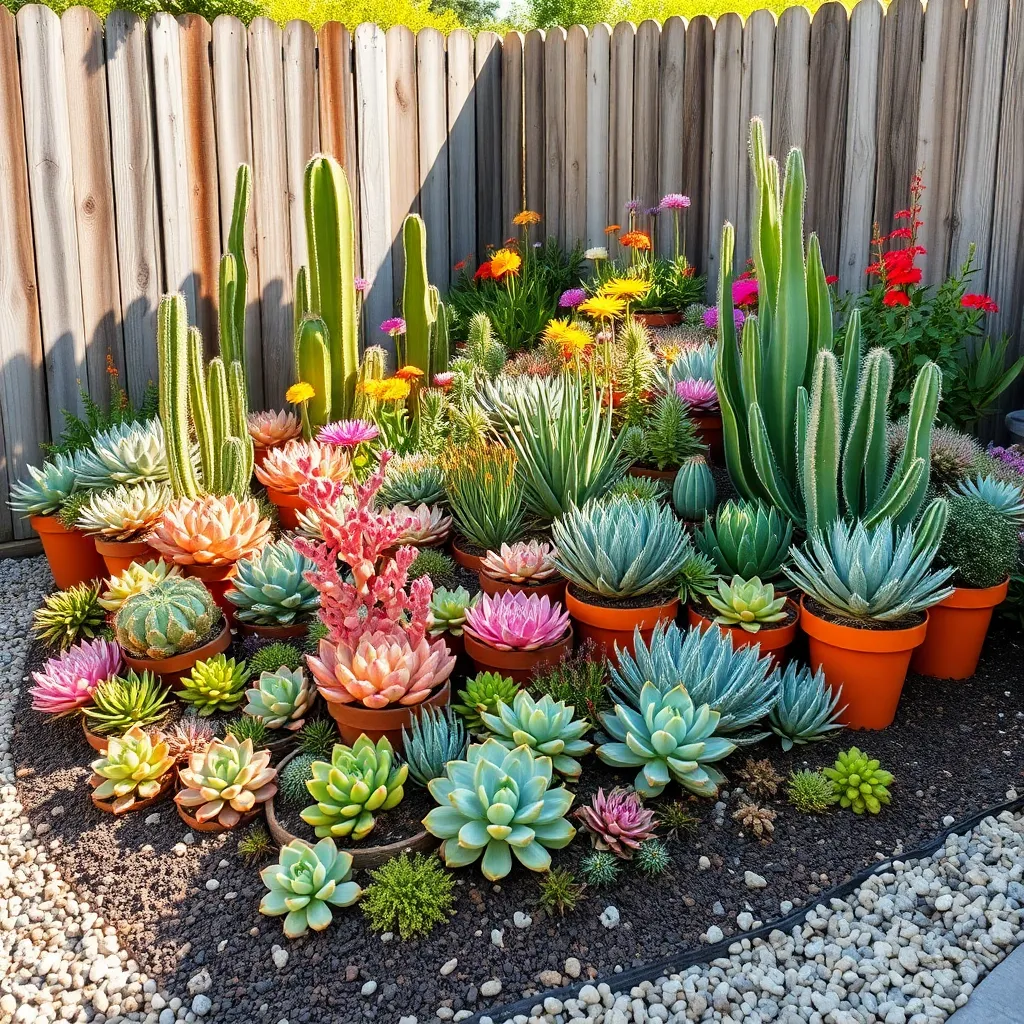
Designing with succulents and cacti is a fantastic way to create a stunning, low-water flower bed. These plants thrive in dry conditions, making them perfect for drought-prone areas or gardeners looking to conserve water.
Start by selecting a location that receives plenty of sunlight, as most succulents and cacti require at least six hours of direct light per day. Consider incorporating a variety of shapes and sizes to add visual interest, such as tall columnar cacti paired with rosette-forming succulents.
Ensure the soil is well-draining to prevent root rot, which is a common issue when growing these plants. Use a specialized cactus or succulent potting mix, or amend regular soil with sand or perlite to improve drainage.
Watering succulents and cacti requires a careful approach; they should only be watered when the soil is completely dry. During the growing season, typically spring and summer, water deeply but infrequently—usually every two weeks is sufficient, though this can vary based on climate.
For an advanced touch, try grouping plants with similar growth habits and care requirements together to minimize maintenance. Use decorative rocks or gravel as a top dressing to enhance the aesthetic appeal and further reduce moisture evaporation from the soil.
Incorporating Hardscapes for Style
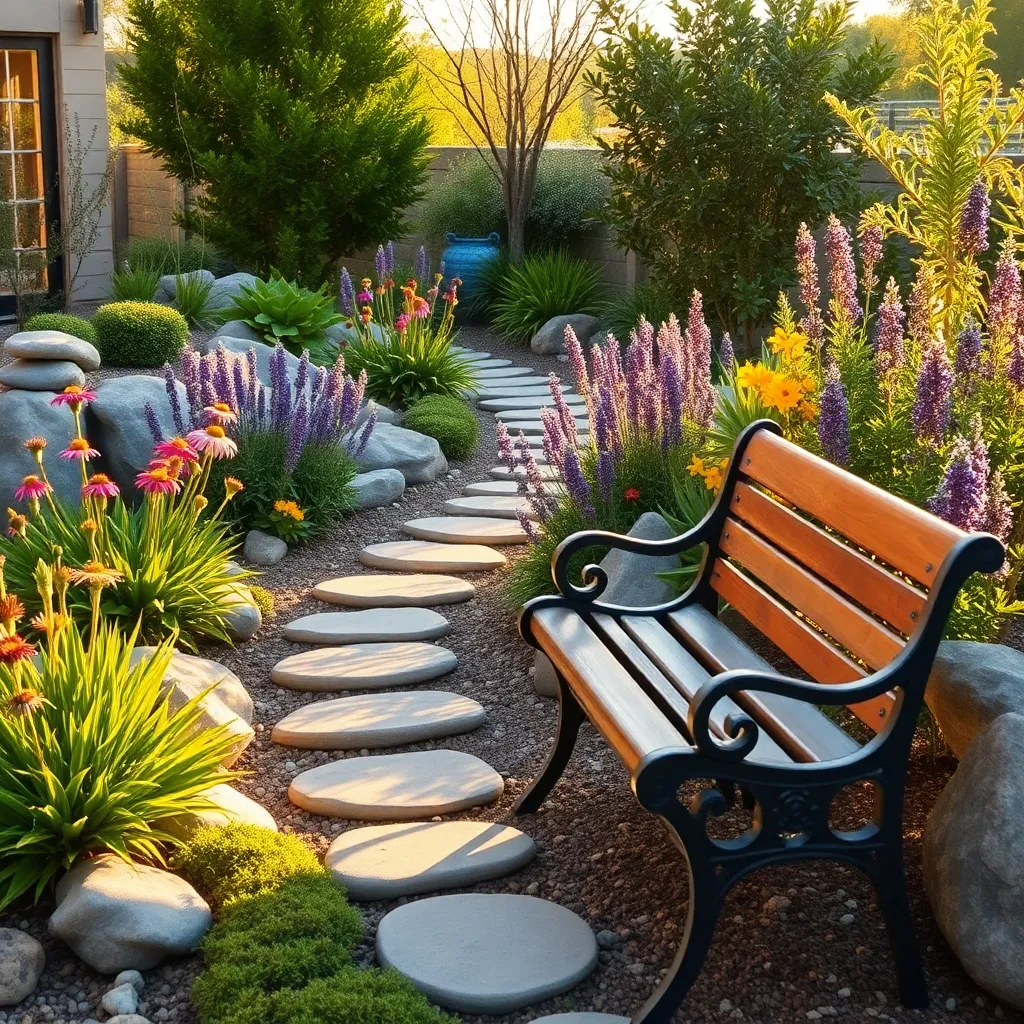
Incorporating hardscapes into your flower bed designs can dramatically enhance the visual appeal while minimizing water use. By using elements like gravel paths, stone borders, and decorative rock features, you can create a striking contrast with your plants and reduce weed growth.
When choosing materials, consider using locally sourced stones to blend naturally with the environment and reduce environmental impact. Gravel and decomposed granite are excellent choices that allow for drainage, helping to keep plant roots dry and healthy.
To add dimension and interest to your flower beds, install raised planters or terraced stone walls. These structures not only provide architectural interest but also improve water retention and drainage, making them ideal for low-water gardening.
Beginners should start with simple designs like a gravel path lined with drought-tolerant plants such as lavender or yarrow. Advanced gardeners might experiment with intricate stone mosaics or patterns to create a unique focal point in their gardens.
Maximizing Shade with Ground Covers
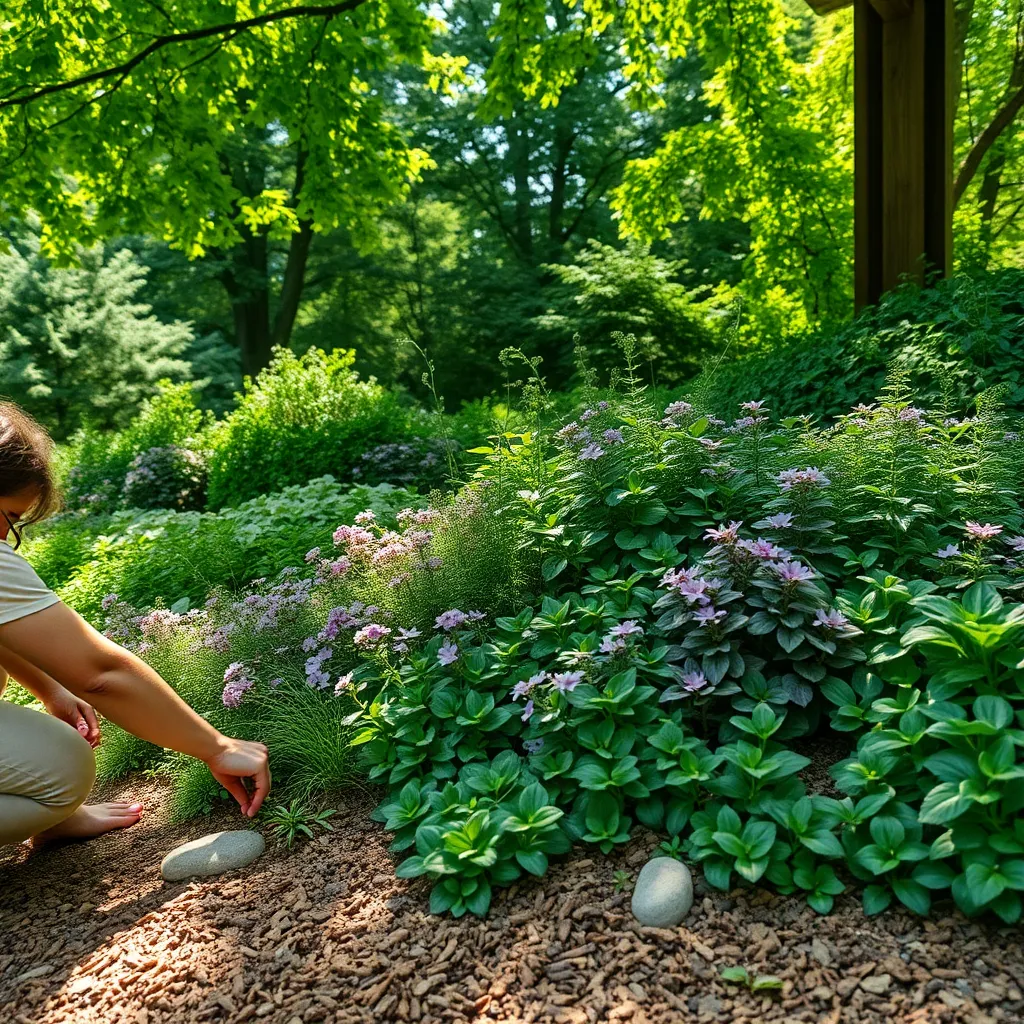
Ground covers are an excellent way to maximize shade in your garden while conserving water. By selecting low-water ground cover plants, you can create a lush, green carpet that reduces the need for frequent watering and maintains moisture in the soil.
Consider using plants like creeping thyme or blue star creeper that thrive in shaded areas and require minimal irrigation. These plants are not only drought-tolerant but also add a beautiful texture and color contrast to your flower beds.
When planting ground covers, ensure the soil is well-draining to prevent root rot, which can be common in shaded areas. Mixing in compost or sand can improve drainage, while a layer of mulch will help retain moisture and suppress weed growth.
For gardeners seeking advanced techniques, stagger the planting of ground covers to create a natural look and promote even growth. Regularly trim the edges to keep them tidy and prevent them from overtaking other plants in your flower bed.
Creating Visual Interest with Rocks
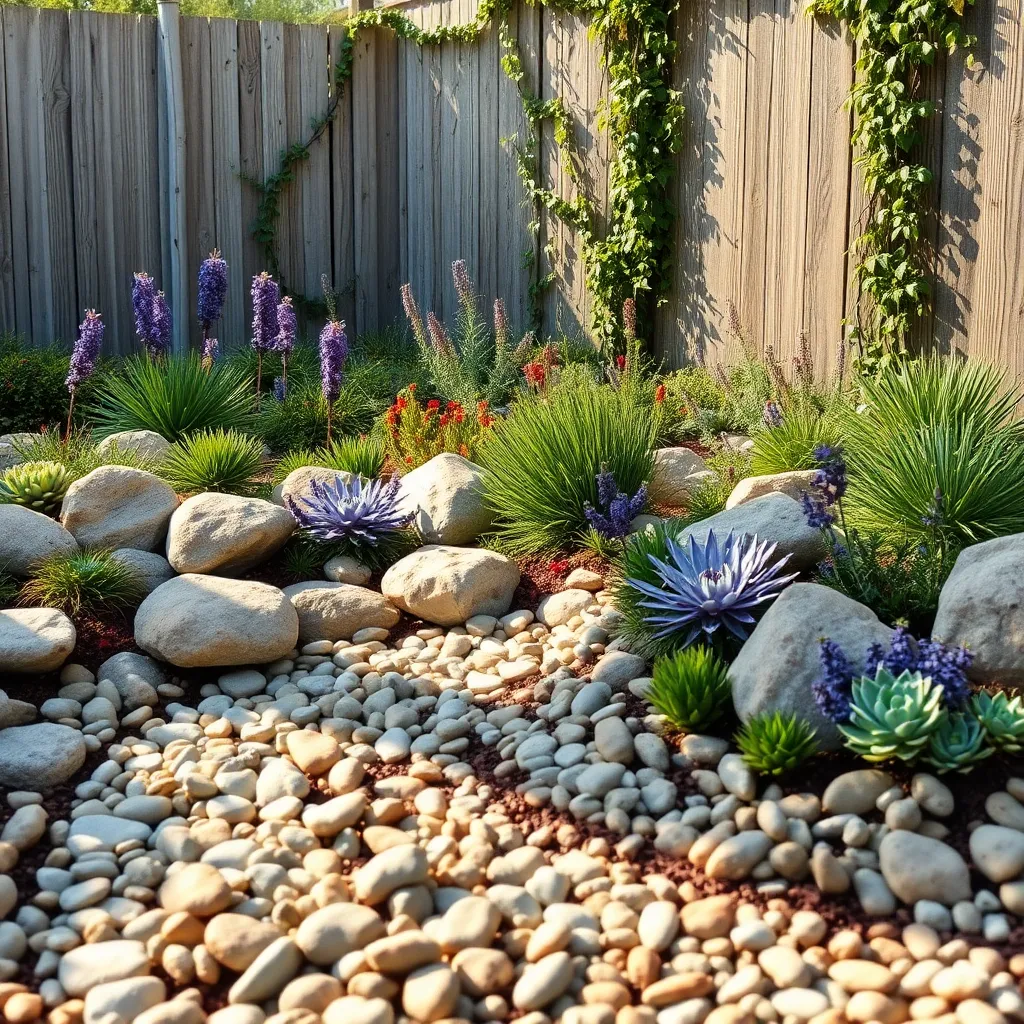
Incorporating rocks into your flower bed design not only conserves water but also adds unique visual interest. To start, choose a variety of rock sizes and shapes to create a naturalistic appearance that complements your plantings.
Consider using rocks as both decorative elements and functional components in your landscape. Strategically placed rocks can help retain moisture in the soil by reducing evaporation, which is particularly beneficial in low-water gardens.
Position rocks around the base of plants to provide added insulation and protection from temperature fluctuations. This practice is especially useful for succulents and drought-tolerant perennials, which thrive in well-drained conditions that rocks can help support.
For a more advanced approach, create a dry stream bed by arranging stones to mimic the natural flow of water. This technique not only enhances the aesthetic appeal but also guides rainwater to essential areas, promoting efficient water use in your garden.
Utilizing Mulch for Moisture Retention
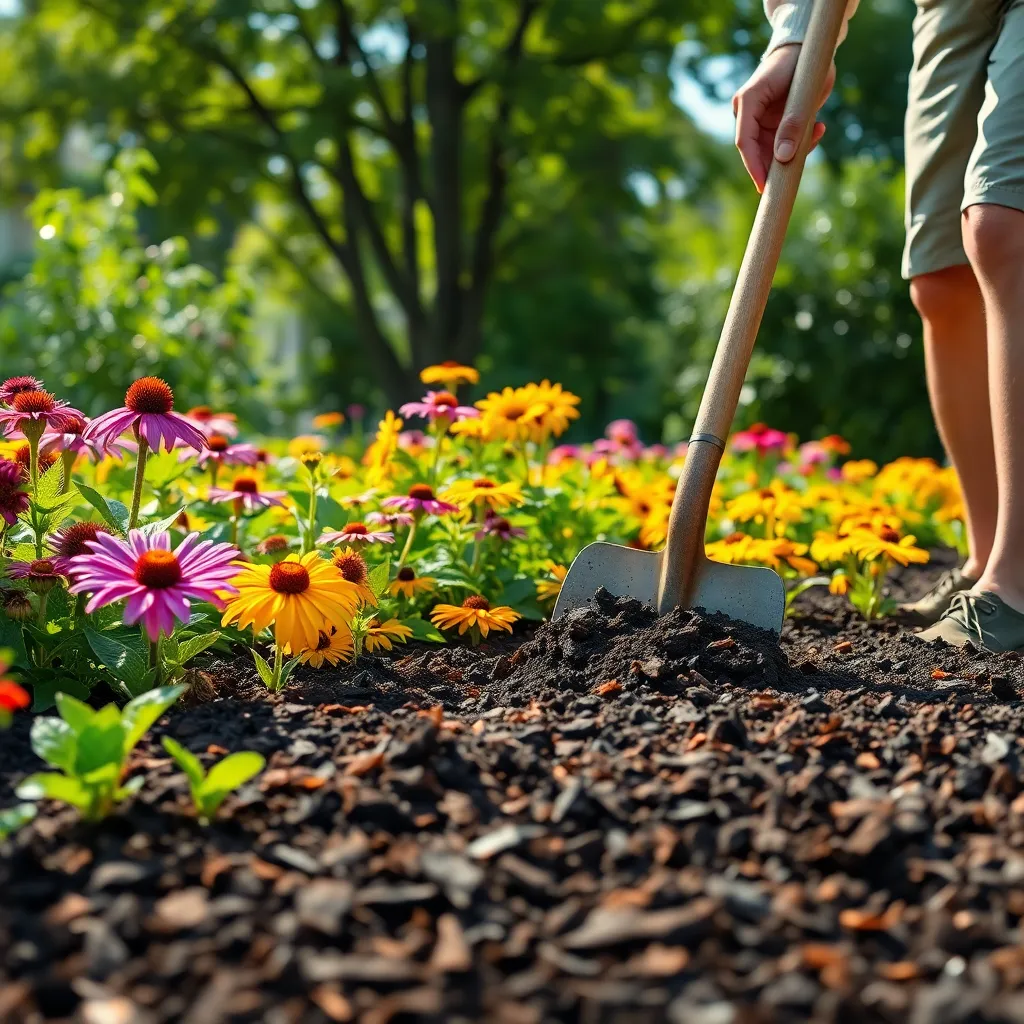
Mulch is a powerful ally in conserving moisture in your flower beds, making it a must-have for low-water garden designs. By creating a protective barrier over the soil, mulch reduces evaporation and helps maintain consistent moisture levels.
Choose a mulch type that complements your garden’s aesthetics and meets your plants’ needs; options include organic materials like bark, straw, or shredded leaves. Apply a generous layer, about 2-3 inches thick, to ensure it effectively insulates the soil and suppresses weed growth.
For best results, ensure the mulch is kept a few inches away from plant stems to prevent rot and disease. Regularly check and replenish the mulch as needed, especially after heavy rains or windy conditions, to maintain its effectiveness.
Advanced gardeners can experiment with different mulches to see how they affect soil temperature and moisture retention. For example, lighter mulches like straw are excellent for reflecting sunlight, while darker mulches like bark absorb heat, each having a unique impact on your garden’s microclimate.
Low-Water Container Gardening Ideas
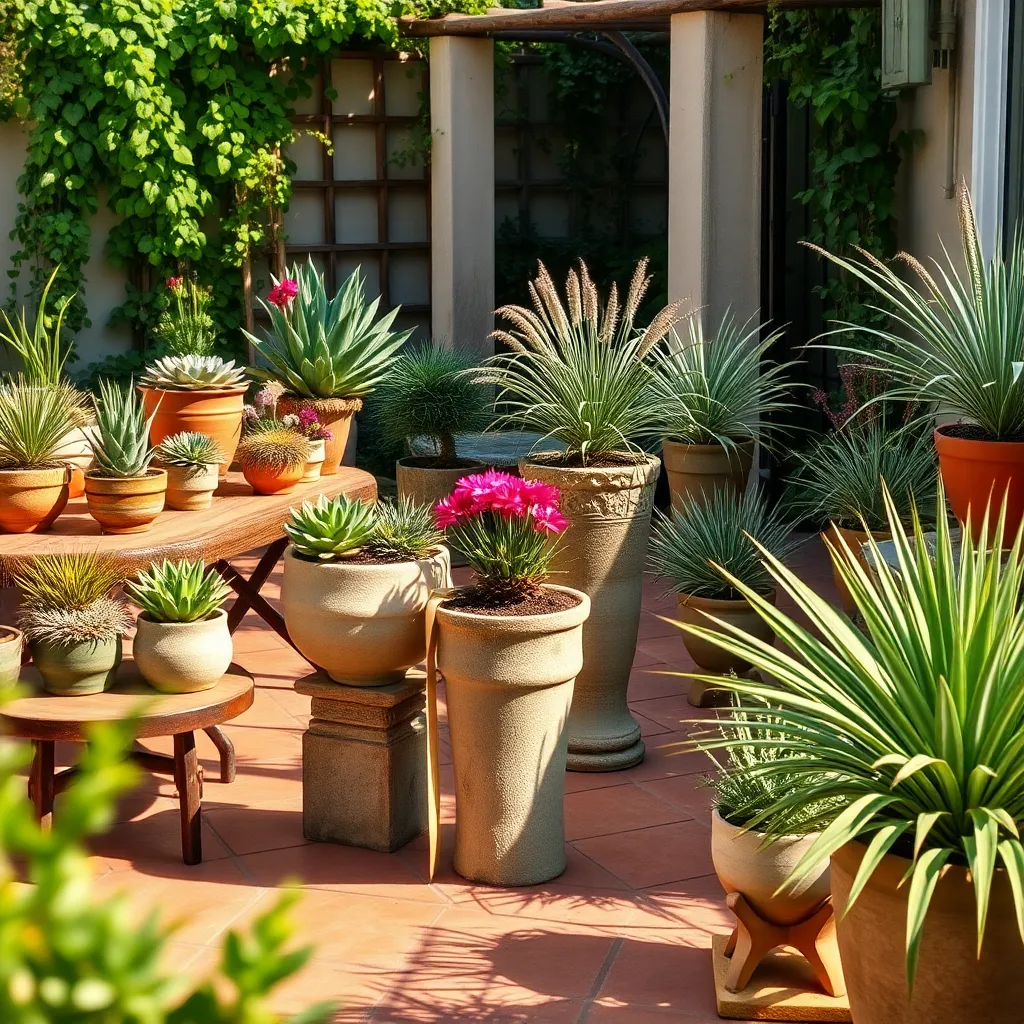
Container gardening is an excellent way to manage water usage while still enjoying a vibrant display of plants. By choosing the right containers, such as those made from terracotta or glazed ceramic, you can help maintain moisture levels more effectively.
Selecting drought-tolerant plants is key to success in low-water container gardening. Consider using succulents like echeverias or sedums, which thrive with minimal watering and still provide striking visual appeal.
For soil, opt for a well-draining mix specifically designed for containers, which often includes perlite or sand. This type of soil prevents waterlogging and encourages healthy root growth, reducing the need for frequent watering.
Advanced gardeners can incorporate a layer of small pebbles or stones at the bottom of containers to further enhance drainage. This technique not only supports plant health but also adds an aesthetic element to your container setup.
Strategic Plant Grouping Techniques
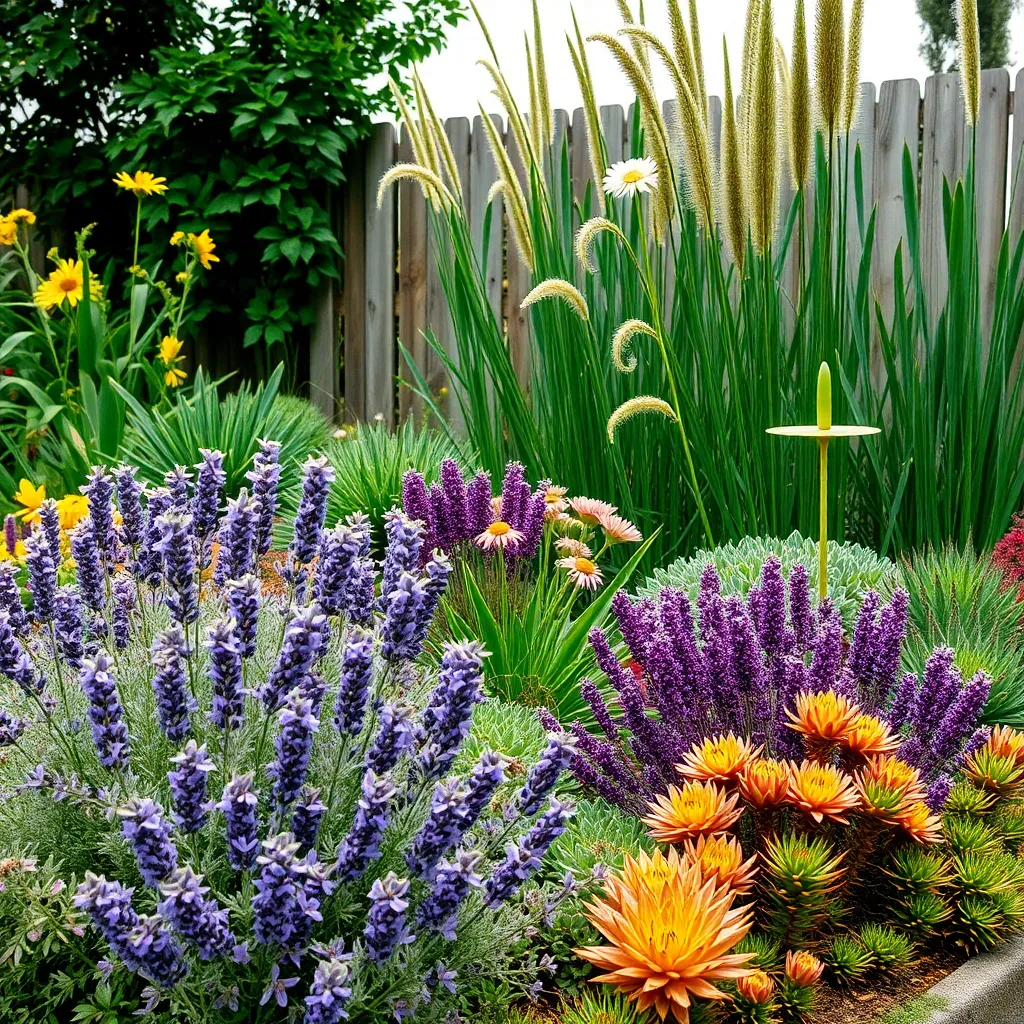
Strategic plant grouping is a powerful technique to enhance the efficiency of low-water flower beds. By selecting plants with similar water, light, and soil requirements, you can ensure each plant thrives while conserving resources.
Begin with grouping plants that have deep roots, such as lavender and Russian sage, as they can access water reserves more effectively. This not only reduces the frequency of watering but also helps in maintaining a consistent moisture level in the soil.
Consider the sun exposure in the area where you plan to create your flower bed. Plants like coneflowers and yarrow thrive in full sun, making them excellent companions in a sun-drenched flower bed.
Integrate ground covers like sedum between taller plants to retain soil moisture and suppress weeds. This approach mimics natural ecosystems, providing a layer of protection against evaporation and enhancing the visual appeal of your garden.
Adding Vertical Elements for Depth
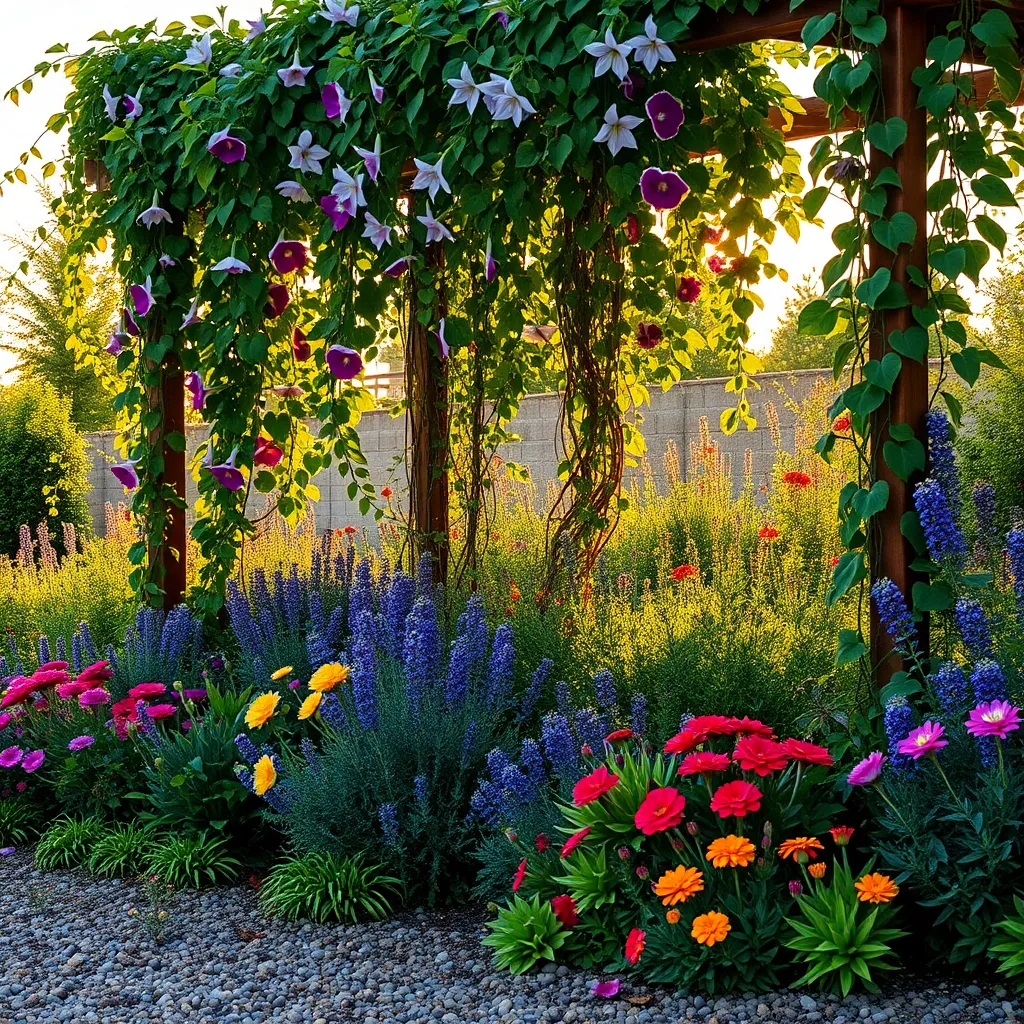
Incorporating vertical elements into your flower bed can create a sense of depth and intrigue. Consider using trellises or obelisks to support climbing plants like clematis or honeysuckle, which are both drought-tolerant once established.
For a creative twist, repurpose old ladders or tall stakes to add height and interest. Vertical elements not only save space but also allow you to grow more plants without expanding your garden’s footprint.
When choosing plants for vertical growth, ensure they are suited to your local climate and the specific conditions of your garden. Many climbers prefer well-draining soil, so consider amending your soil with sand or gravel to improve drainage.
Watering needs for vertical plants can differ from ground-level plants, as they are more exposed to wind and sun. Water deeply but infrequently to encourage deep root growth, and mulching can help retain moisture in the soil.
Seasonal Maintenance Tips for Longevity
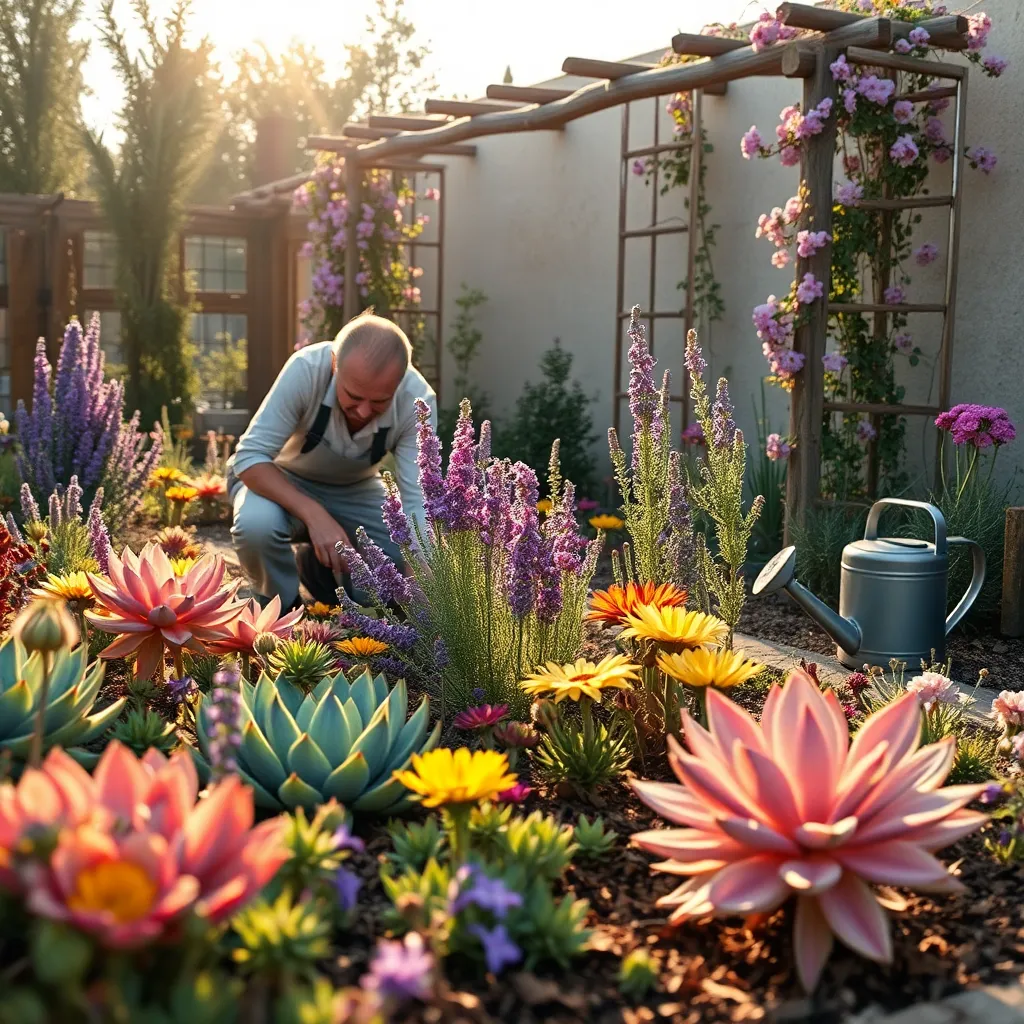
To ensure your low-water flower bed thrives year-round, it’s crucial to perform seasonal maintenance. Begin by regularly checking the soil moisture levels; even drought-tolerant plants need occasional watering, especially during prolonged dry spells.
In the spring, focus on cleaning up debris and dead foliage that may have accumulated over winter. Use a sharp pair of pruners to remove any dead or damaged stems, which will encourage new growth and help maintain plant health.
Summer maintenance involves mulching to conserve soil moisture and suppress weeds. Apply a layer of organic mulch like shredded bark or straw, which can help keep the soil temperature stable and reduce water evaporation.
As fall approaches, it’s time to prepare your flower bed for the colder months. Cut back perennials that have finished blooming and consider adding a layer of compost to enrich the soil with nutrients.
For some advanced care, test your soil pH every few years and adjust as needed to optimize plant health. Many low-water plants prefer slightly alkaline soil, so you may need to add lime if your soil is too acidic.
Finally, always keep an eye out for pests and diseases, as early detection is key to management. Regularly inspect leaves and stems for signs of trouble, and use organic pest control methods whenever possible to keep your garden eco-friendly.
Conclusion: Growing Success with These Plants
In exploring the ’10 Low-Water Flower Bed Designs,’ we’ve delved into the essential relationship concepts of creativity, adaptability, and sustainability within the dynamics of shared spaces. From choosing resilient plants to designing with intention, each tip underscored the importance of nurturing relationships with nature and each other through mindful, resource-conscious decisions. The principles of collaboration, patience, and continuous learning were woven throughout, reminding us that thriving partnerships, much like gardens, require care and thoughtful tending.
As an immediate step, consider implementing one design idea that resonates most with your space and relationship goals. This small act of transformation can serve as a metaphor for the growth you wish to cultivate in your personal connections.
To continue fostering strong, adaptable relationships, save or bookmark this article for future reference. Let it be a guide as you design both your garden and your interactions with intention and care.
Looking ahead, remember that the seeds of success in any relationship are sown through consistent effort and open communication. Embrace these insights as stepping stones towards a flourishing future, where each interaction blooms with possibility and mutual growth.

